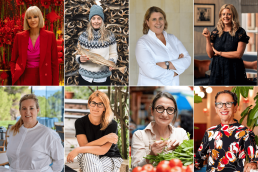As we begin to see the easing of lockdown measures instated following the Coronavirus outbreak, elements of the hospitality industry – one of the sectors hit hardest by social distancing guidelines – are eyeing a return. Following periods of full closure or reduced operation, hotels worldwide are awaiting the green light from governments and guests alike to resume business as usual, and whilst the severity of closures and impact varies from country to country, the road to reopening will likely follow a similar path for all.
In some places this has already begun: InterContinental Hotels Group reopened the majority of its China locations in late April, and California properties have taken early steps since moving into phase two of the state’s recovery plan on 12 June. In Ireland, the Stormont executive is considering a 3 July launch for hotels and bars, whilst 21 projects along the Las Vegas Strip have signalled plans to welcome guests in time for 4 July Independence Day celebrations. For an optimistic indication of timeframe, see a recent slate of new launches that have slated late July and early August 2020 dates. Then again, just as many have opted to push back to 2021.
In some scenarios, destinations like Las Vegas – as well as others including Dubai and Macau, where hospitality and tourism are central pillars of the local economy – may face increased state pressure than others to open doors early, and major brands with global presence will be better placed to open in tandem with more effective national responses. The success of best laid plans, however, will ultimately lie with the guest, and whether those beyond essential workers, locals and business travellers will feel safe returning to normal straight away. Nowhere is this more true than in F&B spaces, wherein questions of hygiene, proximity and safety will all be scrutinised. As such, the road to recovery does not end with doors bursting open; this is arguably the mid-point, and those strategies implemented before and after will likely play a much larger role in persuading guests to return.
Any delays between reopening and people actually returning could prove catastrophic, as venues already feeling the heat spend money on operational and overhead costs only to have no one turn up. The situation is fluid, but also set in stone – a botched reopening could spell the end for projects across the scale, as quarterly rent draws closer, lost revenue begins to mount, and staff shortages continue to grow. With many experiencing similar risks, a number of properties, studios and operators who currently find themselves involved in reopening efforts have begun sharing their strategies, tips and general advice to encourage collaborative, open-source guidance for those preparing to make the journey.
Brand Bureau – a hospitality-specialised creative agency within the wider AvroKO group – recently published its Roadmap to Recovery, a six-part, 16-page document featuring actionable advice on topics from paring down menus for savings on costs and labour to creating blueprints for new seating arrangements. Further suggestions include leveraging the new demand for privacy – “there may be a new demand for more privacy in dining rooms – from curved booths to partitions, it’s critical to think about how to make communal dining spaces feel more private for guests” – and nods to organisations including Bay Area Hospitality Coalition and NYC Hospitality Alliance that are working to connect restaurateurs whilst providing ongoing resources and support.
“In a few short months, the novel Coronavirus has managed to upend our cultural norms and transform our day-to-day lives beyond recognition,” the documents states. “While we are only beginning to understand the wide reaching implications of this pandemic, one thing is certain: more change is imminent. As we plan for the future, we’ll need to reassess nearly everything about the way we interact, shop, eat and socialise.”
The most substantial portions of the report, however, cover the topics of messaging and marketing, and how best to inform guest that it is the right time to return. The messaging section in particular suggests a more transparent approach for guest and employee alike, establishing any new protocols in direct terms, and creating a clear narrative around the steps taken to ensure safety and a high degree of cleanliness. In short, there is work to be done, designing not only safe and functional physical spaces, but a comfortable psychological state for guests too – the latter involving visuals, architecture and interiors as much as it does social media, digital presence and branding.
Elsewhere, Rockwell Group has shared its proposals for an adaptable kit-of-parts that outline how exterior streetscapes could be adapted into outdoor restaurants allowing for scaling social distance measures – read more here. Likewise, Wilson Associates suggests the use of green walls to make interior spaces feel more like their exterior counterparts – guests are likely to feel safer on rooftop bars and terraces than in cramped bars for the foreseeable, but for those without these resources, bringing the outside in could be key to comfort. Meanwhile, a best practice document from Forbes Travel Guide includes several F&B specific tips including single use menus, or serving lists placed within glass tabletops, as well as a self-service buffet model that sees staff serving guests individual portions as opposed to guests using shared cutlery.
“In a post-Covid world, restaurateurs are working hard to implement new cleaning and disinfectant regiments to make F&B environments safe,” comments Jese Medina-Suarez, Design Director at Wilson Associates. “However, for a successful reopening, perceived safety is just as important as actual safety. Restaurants with high levels of privacy or space articulation, where diners have little or no visual contact with other guests boast a great advantage. Private dining rooms are an important asset in this new climate, nevertheless, it is often scarce in most restaurants. Designers can definitely help modify these spaces for the return of guests by creating design elements to screen different dining conditions, adapting layouts to prevent visual contact between groups, and allowing for seating arrangements that are flexible, where a two-metre social distance between tables is possible when, and if required.”
With some reassembly no doubt required, the road to reopening will be lengthy and complicated, and the collaborative efforts of designers, hoteliers, publicists, city officials and state representatives will need to support physical adjustments as much as they do the social aspects of reassuring guests that these adjustments will work as intended. If there is an upside, however, it is that this particular road is new territory for all, and coherent strategies will develop and spread much faster as inevitable success stories emerge from the ongoing, large-scale experiment.
In a marketplace that could soon see a flood of demand, a rapid response will be necessary, and in some cases key to survival. Even then, however, a potential second wave of the virus could see these efforts dashed, and any strategies devised now should not only consider a pandemic-proof model, but perhaps those that offer flexibility in crises beyond disease. At the time of writing, 2020 has provided a wholly unexpected new normal for each month, and there is still half to go. Taking a step back, it may be wise to set a new standard of flexibility also – one with the resilience to operate despite increasingly regular social, political, and economic obstacles.
CREDITS:
Words: Kristofer Thomas
Image: © Prateek Katyal
Related Posts
8 March 2024
IWD 2024: Celebrating women in hotel F&B
1 February 2024



